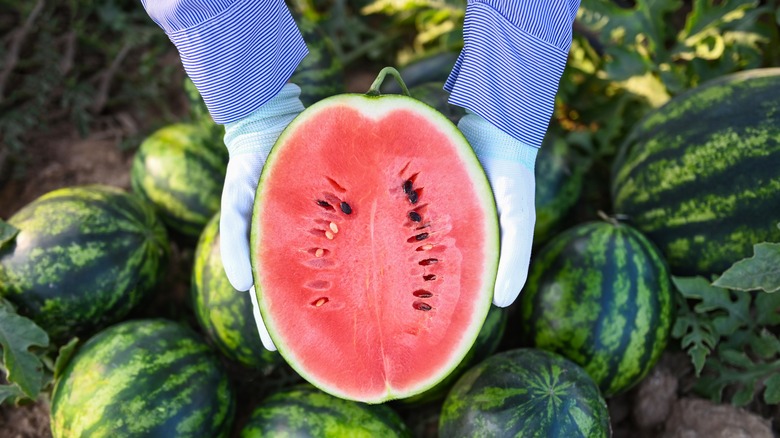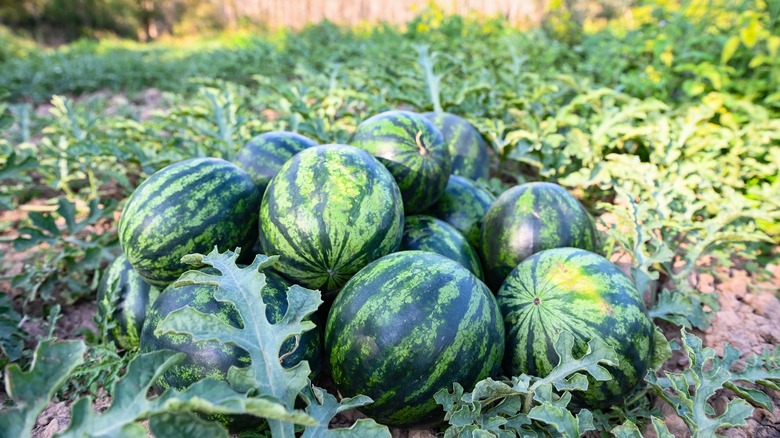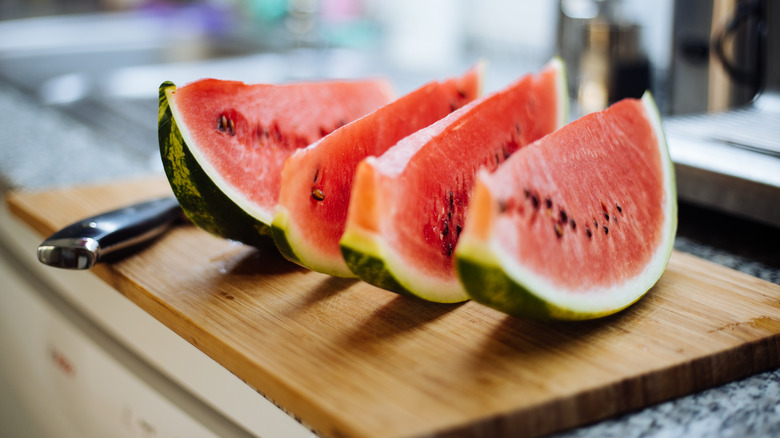When Does Watermelon Season End?
If summer had a fruit mascot, it would undoubtedly be the humble watermelon. Whether you opt to savor it in a strawberry-watermelon aqua fresca or as simple slices, its refreshing and juicy pink flesh offers a thirst-quenching respite on hot days. This makes the large berry a quintessential warm-weather food, perhaps second only to the icy goodness of a frozen popsicle. Typically readily available from May to September across much of the U.S., it's no coincidence that watermelons are a staple of the summer season.
The thick-skinned fruit's suitability for sunny weather comes from its preference for hot, dry climates and its extreme sensitivity to cold temperatures. Unable to withstand frost, watermelon crops are best grown in temperatures ranging between 65 and 95 degrees Fahrenheit; any deviation from this range can severely stunt their growth. As fall ushers in dropping temperatures across the country, the watermelon season, which is at its height in July and August, usually comes to a close toward the end of summer.
Watermelon season technically ends in September
In the U.S., the juicy fruit is primarily grown in eight states, with Florida, California, Georgia, and Texas being the top producers. On average, watermelons are in season from May to September, peaking in July and August. However, the growing seasons can vary significantly depending on the location.
For instance, in Florida — the Sunshine State — the warm, tropical climate allows for two primary growing seasons: One from March to July, and another from October to December. This is great news for local residents craving a fresh bite of the fruit. In contrast, California has a much shorter harvest period, typically from June to September.
But don't fret if you live in an area where the watermelon season tapers off toward the end of summer. You can still snag a bite of this delectable treat year-round, as grocery stores often sell watermelons even during the fruit's off-season.
Watermelons are still available year-round
Even if summer is winding down, you can still savor the refreshing sweet, sour, and bitter flavors of watermelon any time of year. Outside of the peak production period, the fruit is usually imported into the country during the cooler winter months — primarily from Mexico, which accounts for about 80% of all imports each year, as well as from parts of Central America like Costa Rica and Guatemala.
Although domestic production remains the primary source of watermelon in the U.S., imports have been on the rise. A record 1.7 billion pounds of the fruit were brought into the country in 2019, accounting for about one-third of all melons sold. Many of these imports are the popular seedless watermelon varieties. Keep in mind, however, that since these melons have to travel longer distances to reach supermarkets, they may not always be as fresh as their local, seasonal counterparts. Nevertheless, off-season melons are still a great way to indulge in scrumptious slices of this large berry long after summer has ended.



